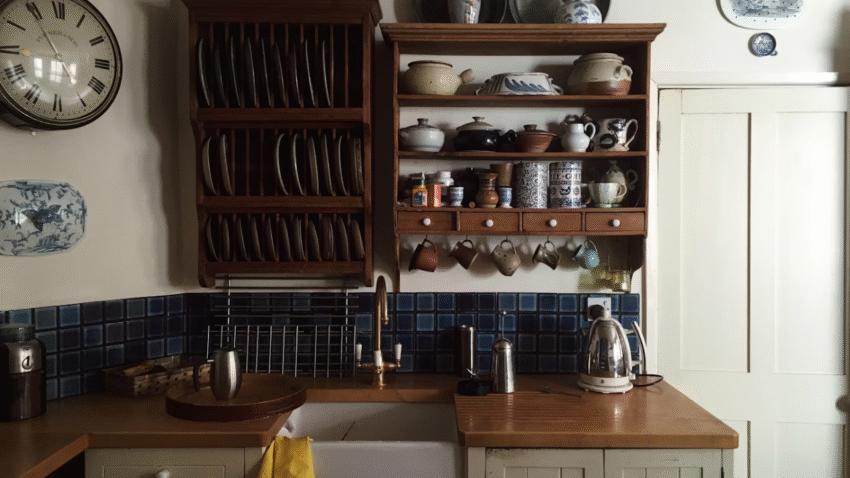Introduction
Frustrated with digging through mismatched jars just to find the paprika? Or worse—grabbing an old spice that expired years ago? If so, it’s time to give your spice rack a much-needed refresh. In this step-by-step guide, you’ll learn how to clean and organize your spice rack efficiently, so you can cook with ease, save time, and enjoy a tidier kitchen.
Why Cleaning and Organizing Your Spice Rack Matters
A messy spice rack isn’t just inconvenient—it can actually disrupt your cooking workflow. Spices lose potency over time, meaning that old cinnamon or cumin might not deliver the flavor punch your recipes need. Disorganized racks also make it harder to find what you need, which can lead to duplicate purchases or skipping essential ingredients.
Keeping your spices clean and well-organized ensures better meal prep, enhances kitchen efficiency, and reduces waste. It also makes your cooking space more visually appealing, especially if your spice collection is out in the open. Whether you’re a seasoned chef or a home cook, this is one small kitchen task that has a big impact.
Step-by-Step Guide to Cleaning and Organizing Your Spice Rack
1. Empty the Entire Spice Rack
Start by removing every single jar, tin, or packet from your spice rack, drawer, or cabinet. Place them on the counter so you can see everything at once.
Tip: Lay down a towel or tray to catch any spills from open containers or loose lids.
2. Wipe Down the Rack or Drawer
Use a damp cloth with a bit of all-purpose cleaner or vinegar to wipe shelves, dividers, or drawer inserts. Dry thoroughly with a clean towel.
Kitchen Reminder: Spices can clump from moisture, so make sure your rack is completely dry before restocking.
3. Check Expiration Dates and Freshness
Go through each spice and check for:
- Expiration or “best by” dates
- Faded color or dull appearance
- Weak or no aroma when you open the lid
If a spice no longer smells or looks vibrant, it’s time to toss or replace it.
General Rule of Thumb:
- Ground spices: good for 2–3 years
- Whole spices: good for 3–4 years
- Dried herbs: good for 1–3 years
4. Consolidate Duplicates
If you have multiple jars of the same spice, combine them—only if they are both fresh and uncontaminated. Label the jar with the newest expiration date or when it was last refilled.
5. Clean the Jars and Lids
Wipe each spice container with a damp cloth to remove grease, dust, and residue. Sticky lids and labels are common, especially near cooking areas.
Tip: Use a bit of baking soda on a damp sponge to scrub stubborn grime from lids or glass jars.
6. Refill and Label if Needed
For bulk spices or half-used packets, transfer them into airtight jars or spice containers. Use uniform labels for a clean, consistent look.
Labeling Tip: Include the spice name and the date it was opened or filled for future reference.
7. Choose the Best Organization Method
Now that your spices are fresh and clean, organize them in a way that works for your kitchen layout and cooking habits.
Option 1: Alphabetical Order
Easy to maintain and great for quickly locating any spice.
Option 2: By Cuisine or Flavor
Group spices by how you use them:
- Italian (oregano, basil, rosemary)
- Indian (turmeric, garam masala, cumin)
- Baking (cinnamon, nutmeg, cloves)
Option 3: Most Used to Least Used
Put your everyday spices front and center, while rarely used items go in the back or higher shelves.
8. Restock Your Rack or Drawer
Place each spice back onto the rack, shelf, or drawer using your chosen organization method. Be sure jars are upright, secure, and easy to read.
Tip: Consider tiered shelves, spice risers, drawer inserts, or magnetic racks to maximize space and visibility.
Common Mistakes to Avoid
Mistake 1: Storing Spices Near Heat or Sunlight
Heat and light degrade spices faster.
Solution: Keep your spice rack away from the stove, oven, or windows.
Mistake 2: Using Unsealed Containers
Open or loosely closed packets allow air, moisture, and pests in.
Solution: Store spices in airtight containers or jars with tight-fitting lids.
Mistake 3: Never Checking for Expiration
Many people assume spices last forever.
Solution: Set a reminder to check your spices every 6–12 months.
Mistake 4: Letting the Rack Overflow
Too many spices make it harder to find what you need.
Solution: Keep your collection curated to what you actually use.
Mistake 5: Ignoring Cross-Contamination
Using dirty hands or spoons spreads moisture and bacteria.
Solution: Always use dry, clean utensils when scooping spices.
Extra Tips & Kitchen Hacks
Use Chalkboard or Clear Labels
Chalkboard labels make it easy to update contents, while clear labels offer a clean look. Bonus: Add the expiration date on the bottom or side.
Turntables for Deep Cabinets
Lazy Susans or rotating trays are great for deep shelves, letting you reach spices at the back without removing everything.
Store Refills Separately
Keep backup spices or large containers in a separate bin or pantry space, and refill jars as needed.
Related Task: After organizing your spice rack, consider cleaning your pantry or organizing your baking supplies for a fully streamlined kitchen.
Conclusion
A clean and organized spice rack makes cooking more enjoyable, speeds up prep time, and ensures every dish is packed with fresh, flavorful ingredients. Whether you alphabetize, group by cuisine, or prioritize by use, your spice setup should work for you.
One last tip? Make it a seasonal habit—clean your spice rack every 3 to 6 months to keep everything fresh and functional. Bookmark this guide to revisit every time your rack needs a little TLC.
